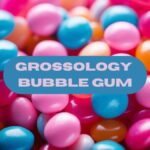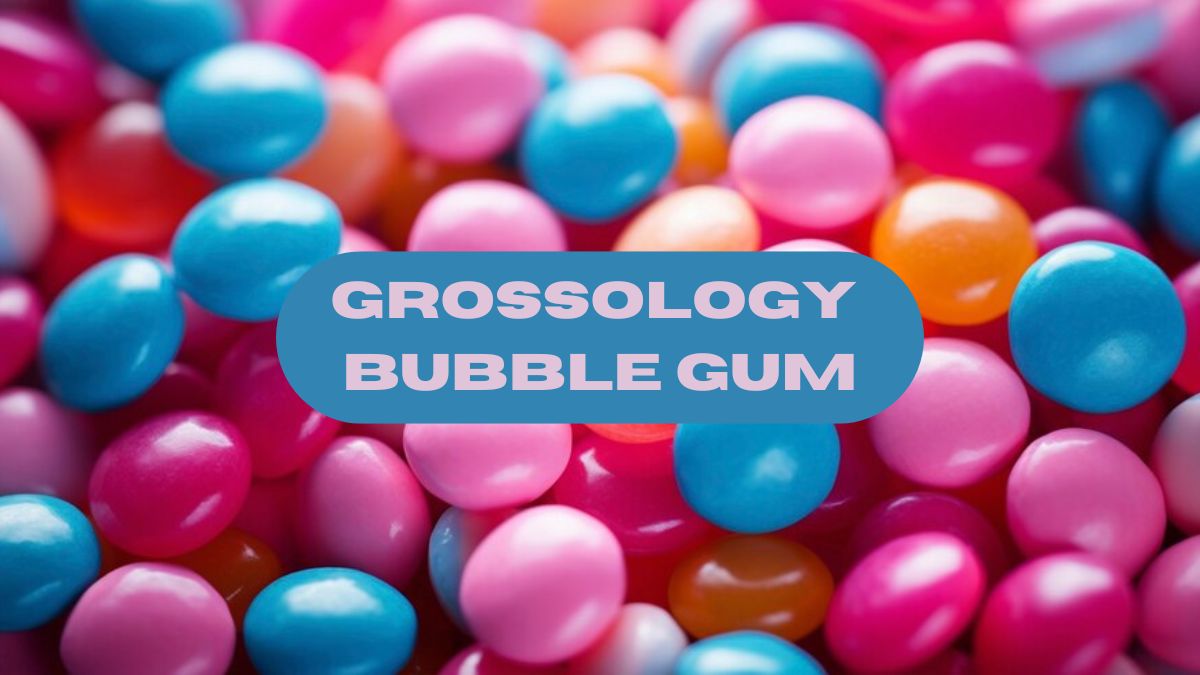Grossology Bubble gum is more than just a fun treat to chew on—it’s a quirky world full of fascinating science, history, and gross facts that make it even more interesting. Welcome to the world of “Grossology Bubble Gum,” where we dive into the science of gum, its weird and wonderful effects on our bodies, and some fun, gross facts you probably never knew about.
The Origins of Grossology Bubble Gum
Grossology Bubble gum has a long history dating back to ancient civilizations. The ancient Greeks chewed on mastic tree resin, while the Mayans and Aztecs enjoyed chicle from the sapodilla tree. However, the bubble gum we know today was invented in 1928 by Walter Diemer, who accidentally created a stretchy, less sticky form of gum that allowed users to blow bubbles. This invention not only entertained millions but also sparked the mass production of bubble gum worldwide.
What Is Grossology Bubble gum Made Of?
If you’ve ever wondered what gives Grossology Bubble gum its chewy texture, the answer lies in a combination of synthetic rubber or latex, resins, and waxes. These ingredients work together to give Grossology Bubble gum its unique properties, allowing it to stretch and form bubbles. However, the science behind the chew doesn’t stop there. The gum base is combined with sweeteners, flavorings, and softeners to create the taste and texture that people enjoy.
Why Does Bubble Gum Never Break Down?
One of the weirdest things about bubble gum is its resistance to breaking down. Unlike food, gum cannot be digested by your body. This is because the synthetic gum base is designed to be resistant to saliva, stomach acid, and digestive enzymes. So while your body can process the sugars and flavorings in gum, the gum base stays intact, which is why people are often warned not to swallow it.
The Gross Science of Bubble Blowing
Blowing bubbles with gum might seem like just a fun activity, but it involves some fascinating science. When you chew gum, your saliva breaks down the sugars and softens the gum, turning it into a stretchy substance. As you blow air into it, the gum forms a thin membrane, trapping the air inside. The key to making a big bubble lies in the balance between gum softness and the pressure you apply with your breath. Too much pressure, and the bubble pops; too little, and it won’t form.
Bubble Gum and Bad Breath: The Gross Connection
Did you know that chewing Grossology Bubble gum can sometimes cause bad breath? While sugar-free gum is often promoted as a way to freshen your breath, sugary bubble gum can actually feed the bacteria in your mouth. These bacteria break down the sugars and release sulfur compounds, leading to unpleasant smells. This is why it’s better to opt for sugar-free gum if you’re looking to combat bad breath.
Can Bubble Gum Clean Your Teeth?
Despite the gross connection to bad breath, there is a positive side to chewing gum when it comes to oral health. Chewing sugarless gum can help clean your teeth by stimulating saliva production. Saliva helps wash away food particles and neutralize acids in the mouth, reducing the risk of cavities. However, don’t mistake gum for a replacement for brushing and flossing!
The Sticky Problem: Why Is Bubble Gum So Hard to Remove?
One of the most annoying things about bubble gum is how sticky it can be. This stickiness comes from the polymers in the gum base, which bond tightly to surfaces like skin, hair, and fabric. Removing gum can be a challenge because it clings to surfaces and doesn’t dissolve in water. Solutions like ice, peanut butter, or even oil can help break the bond and make gum removal easier.
The World’s Largest Bubble
For those who love to blow bubbles, the world record for the largest bubble ever blown is an impressive feat. The current record stands at 20 inches in diameter, set by Chad Fell in 2004. This record-breaking bubble was achieved without using hands to stretch the gum, relying solely on the chewer’s lung power and skill.
Grossology Bubble gum in Pop Culture
Grossology Bubble gum has not only made its mark in the world of confectionery but also in pop culture. From iconic characters like Violet Beauregarde in Charlie and the Chocolate Factory to the unforgettable bubble-blowing scene in Willy Wonka, bubble gum has become a symbol of fun and rebellion. Its colorful appearance and playful nature have made it a staple in movies, commercials, and even art.
The Health Effects of Chewing Bubble Gum
While chewing bubble gum can be fun, it’s important to be aware of the potential health effects. Excessive chewing can lead to jaw strain, headaches, and digestive issues. Additionally, consuming too much sugar-laden gum can contribute to tooth decay and weight gain. Moderation is key when enjoying your favorite bubble gum.
Is Swallowing Bubble Gum Dangerous?
One of the most common myths about bubble gum is that swallowing it can cause serious health issues, like blocking your digestive system. While it’s true that your body can’t digest gum, swallowing a small piece isn’t harmful. Your body will eventually pass it through the digestive system. However, swallowing large amounts of gum over time could lead to blockages, so it’s best to avoid making it a habit.
Fun Facts About Bubble Gum
- Bubble gum was originally pink because that was the only dye available at the time.
- The average piece of bubble gum loses its flavor after about 30 minutes of chewing.
- Chewing gum burns roughly 11 calories per hour!
- In some places, like Singapore, chewing gum is banned in public places due to its littering problem.
- National Bubble Gum Day is celebrated on the first Friday of February each year!
The Environmental Impact of Bubble Gum
While Grossology Bubble gum might be fun to chew, it’s not so friendly to the environment. Since gum is made from synthetic rubber, it doesn’t biodegrade, meaning it can linger in the environment for years. Discarded gum can stick to sidewalks, shoes, and even wildlife. This has led to efforts to create more eco-friendly, biodegradable gum options.
The Science Behind Grossology Bubble gum Flavor
Ever wonder why bubble gum has such a distinct flavor? The traditional “bubble gum” flavor is a mix of fruit flavors, often including banana, strawberry, and cherry, with a hint of vanilla. This unique combination has become synonymous with the pink-colored gum we see in stores today. The artificial flavoring is designed to be long-lasting, providing chewers with extended enjoyment.
Conclusion:
Grossology Bubble gum isn’t just a sugary treat—it’s a quirky world filled with fascinating science, fun history, and a bit of grossness. From its origins in ancient civilizations to its role in pop culture, bubble gum continues to capture the imagination of people young and old. Whether you love blowing bubbles or just enjoy the sweet flavor, there’s no denying that bubble gum has a special place in our hearts—and mouths.
FAQs
How long does Grossology Bubble gum take to decompose?
Grossology Bubble gum can take up to five years to decompose because of its synthetic rubber base, which resists environmental breakdown.
Can chewing bubble gum help with focus?
Yes, studies have shown that chewing gum can improve concentration and memory by increasing blood flow to the brain.
Is there a world record for the most pieces of gum chewed at once?
The current record for the most pieces of gum chewed at once is 153, achieved by a man in Austria.
Why does gum lose its flavor?
Gum loses flavor as the sweeteners and flavorings dissolve in your saliva and are absorbed by your body.
Can bubble gum cause digestive issues?
Swallowing small amounts of gum won’t harm you, but swallowing large quantities could lead to digestive blockages.









